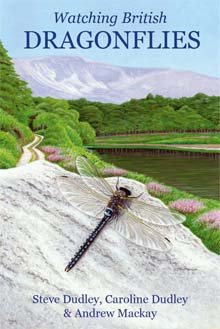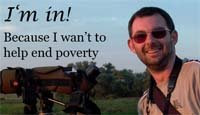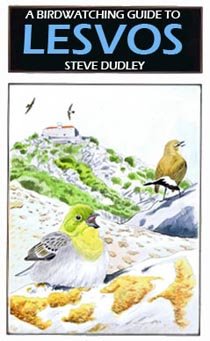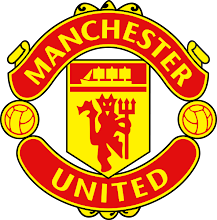Day four of my Shetland & Orkney trip for Speyside Wildlife with fellow guide Ray Nowicki.
Guests: Liz, Chris, Joan, June, Daphne & David , Mary & John , Margaret & Terry.
After another ‘full’ breakfast, we head into Lerwick and take the 9.00am ferry over to Bressay. Crossing the island we check the two freshwater lochs. The first is home to the Kittiwake Bathing Club with about a dozen birds ‘flutter-bathing’. Their two-tone plumage makes them almost appear ghostly and as each one leaves the loch, it stalls and shakes itself dry in mid-air. The second of the two lochs is home to a pair of Red-throated Divers, and swimming alongside one of the adults is a fluffy chick.
We park up on the hill opposite the island of Noss – our destination for the day. After donning all our warm weather gear, rucksacks containing our day’s provisions, bins and scopes, we look like a crack military force than a group of holidaying birdwatchers!
The walk down to the landing stage is littered with families of Wheatears ‘chacking’ all around us - the Shetland name of Steyne Chakker is very apt. A Shetland Wren performs brilliantly as it hops along a dry stone wall. A Raven is sitting on the ruins of a nearby building and as we approach it takes flight and is followed by four more which were hidden from view. Over the beach an Arctic Skua harasses the Arctic Terns and Ringed Plovers run around the grassy slopes above them.
We are ferried across to Noss by one of the wardens in the Zodiac four at a time. The terns, skuas and Eider (Dunter) occupy those waiting at either end until we are all safely delivered to the Noss information centre for our brief talk about the island and its wildlife.
We set off up the island and soon discover why Stinking Geo is so called. Not that the Ringed Plover, Dunlin and Turnstone seem to mind. Bonxies are everywhere – on the ground and in the sky. Over 400 pairs breed on the island which ensures nothing else gets any peace! Walking around the southern side we see more Wheatears and the odd Grey Seal. Even the low soil cliff banks here are covered in breeding Fulmars. In fact, Fulmar seem to nest almost anywhere with several pairs up under peat cuttings on the open moorland. Over the sea there is a constant traffic of seabirds toing and froing from the island.
We arrive at the first real seabird area of Cradle Holm, a broad sea stack standing c.200ft tall. Puffins are continuously flying to and fro from their burrows. Arriving birds are quick to disappear underground and departing birds are soon airborne and heading for the sea. A couple of birds on the stack eventually stand out in the open for us scope and enjoy to the max. On the lower ledges are several pairs of Shags with young – some fluffy and some close to fledging.
Five Twite (Linties) arrive around the clifftops, flitting around sounding their presence with their buzzy calls. It’s a family party with a nice bright male and four young. The male is a bit shy and departs for the stack, but the female and young hop around right in front of us giving us great views of these little finches. Although closely related to Linnets (also known as Linties) with their streaky gingery-brown plumage and punched-in tiny bill, they actually look more like Redpolls.
We head round to view the northern side of the stack where Guillemots (Lomvies) are lined up along their nesting ledges and a good proportion of them are the northern ‘bridled’ form. Razorbills are much less numerous as they prefer the more secure hollows, holes and crevices under overhanging boulders for their nests crape. The air is thick with birds, and the sea is dotted with auks and Fulmars. One Fulmar is attracting the attention of the Bonxies as it pecks at a floating carcass. Soon six Bonxies encircle the Fulmar and drive it away and claim the carcass for their own – bullies!
We arrive at Rumble Wick with the most spectacular of the island’s views looking across to the Noup of Noss. The cliffs are white with nesting Gannets and guano! The wind is in a favourable direction so our nostrils are only filled with the occasional whiff of guano from the updrafts.
We spend a leisurely 45 minutes having lunch and taking in the sights, sounds and smell of a Gannetry in full swing. Over 8000 pairs of Gannets breed here and it’s an awesome sight - the cliffs, sea and air are all full of these huge white birds. The clouds have dispersed and we enjoy lunch under a brilliant blue sky and full, warm sun.
For the first time this week, layers are being shed instead of donned! This allows us time to study the goings on of the Gannetry more closely - young birds attempting to land on the breeding ledges are soon driven away by angry adults; parents tend to their large fluffy white bundles laid at their large flipper-like feet; arriving birds are greeted with bill claps and growls, which is followed by bill touching and usually mutual preening; neighbour disputes are commonplace, with outstretched bill pointing at one another; birds adjusting their nests; and even some birds taking a nap (yes, in this noise!).

The Noup of Noss - one of the best lunch spots in the world!
Where we are sat birds pass by within a few metres of us – Gannets, Fulmars, Bonxies, gulls, Arctic Skuas – all sweeping effortlessly past on the updrafts from below. At times, these updrafts are like escalators, lifting bird vertically up the face of the cliff and in to the sky. The air is full of feathers and other lightweight detritus brought up from the nests below on the updrafts with spinning feathers heading skywards.
We move on and take the gruelling walk up the steepest bit of the island up to the Noup. The seacliffs aren’t only home to birds, but are host to a wonderful array of flowers including Roseroot, Scots Lovage, Sea Campion, Thrift and Sea Mayweed. Rock Pipits and Starlings scour these faces for food, and the grassy tops are host to Meadow Pipits and Skylarks. Reaching the top, some of the ‘elders’ among us comment that it’s the younger members of the party to make it to the top last! The cheek.
We catch our breath at the top before descending down the northern side of the island. The many geos are stuffed with even more Fulmars and patrolling skuas and gulls. This side of the island is normally littered with eggs predated by gulls, but only a couple are found. This, together with not a single Guillemot egg or young seen on the ledges, in another indication of the failure of those seabirds which depend on Sandeels. Noss usually holds over 20,000 pairs of Guillies – but there is nowhere near this number present today.
In one geo we are lucky to find a lone Tystie sat up on a rock. It looks very nervous and ready to fly off, but we manage to get our scope up and on to it for all to enjoy super-close views of this cave-nesting auk. It settles and we get great views of its red feet, red inner mouth and the velvety texture of its brilliant white wing patches.

A tasty little Tystie - second only to Puffin for aukish good looks
We pass by a very noisy Arctic Tern colony which erupts when a Bonxie comes over looking for a meal. The terns fill the air with their deafening cries as they chase off the intruder before returning to the boulder area.
We arrive back at the information centre weary from our walk, and are ferried back across to the Bressay side in three loads. The skuas are still harassing the terns, and the walk back up to the car park is again peppered with young Wheatears. We head straight back to the ferry to Lerwick where we make a quick stop for banks and tick off the King and Queen of Norway (we think!). We are soon back at the hotel and eager for our dinner (but have to wait over an hour!), but it is as entertaining as usual!









No comments:
Post a Comment